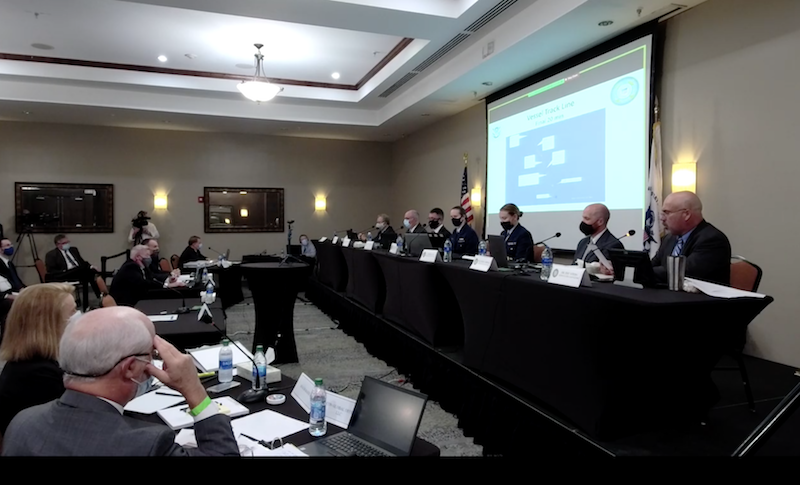On April 13, the liftboat Seacor Power made its way into the Gulf of Mexico from Port Fourchon, La., headed for an offshore rig owned by Talos Energy. In route, the boat motored into a storm. Seacor Power capsized. Six out of the 19 onboard the vessel owned by Seacor Marine were rescued, the rest are dead or remain missing. Among the dead is the boat’s captain, David Ledet.
A small but intense low-pressure system, known to meteorologists as a wake low, passed through the area on the afternoon of the incident, creating hurricane-force winds of 80-90 mph and seas offshore of 7' to 9'. Though bad weather had been forecasted, the intensity of the storm took everyone by surprise.
Coast Guard hearings into the incident began Monday in Houma, La. The testimony from those that survived the tragedy was gut wrenching at times.
Capt. Bryan Mires, the boat’s first mate, testified Tuesday that he and captain Ledet were aware of thunderstorms in the area but had no indication of a wake low situation forming in the Gulf. About mid-afternoon, the weather turned bad fast.
Mires and Ledet agreed that the best thing to do was put the legs down and jack-up the boat out of the water. Before they could get the legs down, however, the boat began to list badly.
“When I look back up, at the level, we are listing more, and I told Dave, I think we’re going over,” Mires testified. “I realized we were not going to be able to correct, so I hit the tilt alarm, which sends an alarm throughout the vessel.”
Mires said Ledet told everyone onboard, through the boat’s loudspeaker, to get their lifejackets on. “That’s when I watched Dave, so I watched Dave fall,” Mires said as he chocked up. Gathering himself, he added, “I’ve never seen him again.”
During Monday’s testimony, Dwayne Lewis, an independent contractor working for Talos Energy, was asked if he was aware of the weather warning that day.
“No,” was his reply.
Lewis testified that he was sleeping when the storm hit. He was awakened, “when the boat rolled,” he said. Now trapped and unable to leave by the doorway, his only chance was the window in his cabin. Along with another of those onboard, the two men used a fire extinguisher to break the window and get out.
Lewis was in the water for about three hours before being picked up by a shrimp boat. “I said please calm the seas. It’s something when you talk to your dead mom to say you’re not ready to see her yet.”
Lewis was asked if there was a recommendation he would like to make, and he said, “Latching perhaps. Or anything to help break that window.”
A preliminary National Transportation Safety Board (NTSB) report released in May said the boat’s pilot turned the liftboat Seacor Power into the wind during the squall while the vessel’s legs were lowering, but the move couldn’t keep the boat from capsizing.
NTSB investigators learned that at about 3:30 p.m., as the Seacor Power transited the open waters of the Gulf, a squall passed over the liftboat. With visibility dropping and winds increasing significantly, the crew decided to lower the liftboat’s legs to the seafloor to hold the vessel in position until the storm passed. The crewmember at the helm attempted to turn the Seacor Power into the wind as the legs began to descend. Before the turn was completed, the liftboat heeled to starboard and capsized.
NTSB investigators also learned several people were able to escape onto the exposed, port side of the deckhouse. High winds and seas that had built to 10' to 12' prevented rescuers from reaching those who remained on the liftboat. Some were washed into the water and six were eventually rescued.
NTSB investigators have interviewed survivors, other personnel who previously crewed the Seacor Power, representatives for the owner and charterer, vessel inspectors and surveyors, and search and rescue responders.
NTSB is involved with the hearings going on in Houma this week.





